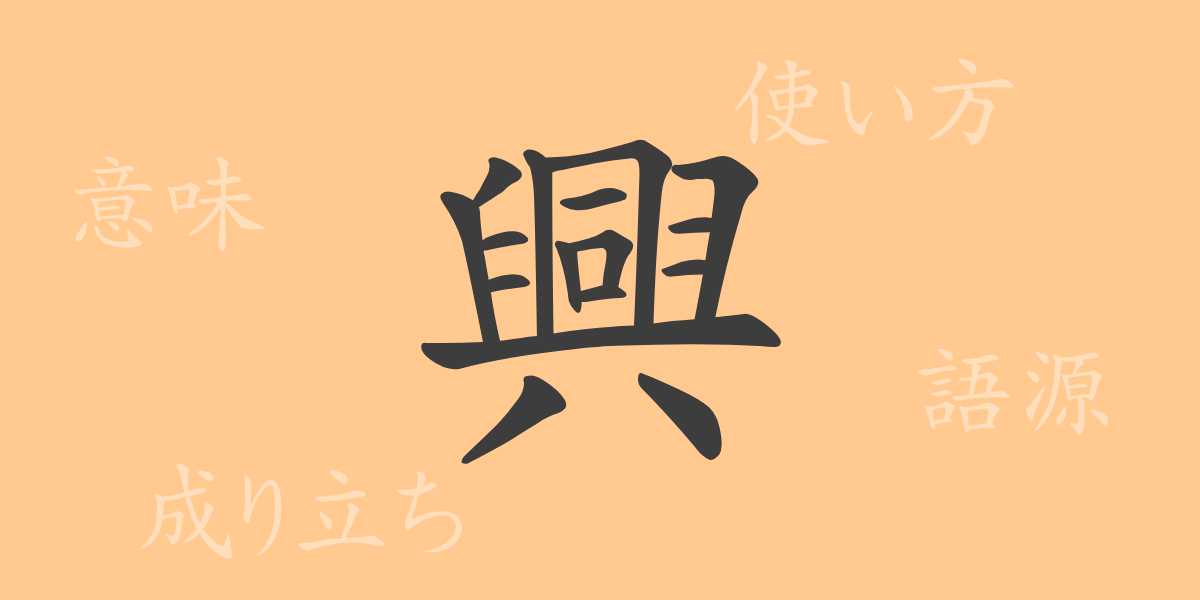The beauty of the Japanese language is reflected in its characters. Each kanji character carries profound meanings, and the process of their formation breathes life into the culture beyond words. This time, we focus on the commonly used kanji “興(こう/きょう),” exploring its origins, meanings, usage, and related idioms and phrases, to uncover the full scope of this fascinating character.
Origin of 興(こう/きょう) (Etymology)
The kanji “興(こう/きょう)” originates from ancient China. Initially, it represented the concept of “rising up.” In oracle bone script, it depicted the shape of a person rising. This meaning was retained in seal script and evolved to include more abstract concepts such as “beginning” and “prospering” over time.
Meanings and Usage of 興(こう/きょう)
In modern Japanese, “興(こう/きょう)” is a versatile kanji used in various contexts. It appears in words like “興奮(こうふん)” (excitement), “興味(きょうみ)” (interest), and “興行(こうぎょう)” (entertainment). As a verb, “興す(おこす)” means “to initiate” or “to revive,” highlighting its role in indicating the start or intensification of something.
Readings, Stroke Count, and Radical of 興(こう/きょう)
The kanji “興(こう/きょう)” also reflects the depth of the Japanese language through its readings and structure.
- Readings: On’yomi (音読み) are “コウ” and “キョウ,” while Kun’yomi (訓読み) are “おこる” and “おこす.”
- Stroke count: It has a total of 16 strokes.
- Radical: The radical is 臼(うすへん), representing a mortar, which is common in characters related to grinding or rising.
Idioms, Phrases, and Proverbs Using 興(こう/きょう)
Words and idioms containing “興(こう/きょう)” contribute richly to the expressive nature of Japanese. For example, “興味津々(きょうみしんしん)” expresses a state of keen interest, “一興(いっきょう)” refers to a minor enjoyment or amusement, and “興ざめ(きょうざめ)” describes a loss of excitement or interest. These expressions vividly depict emotions and situations in daily conversation, literature, and media.
Conclusion on 興(こう/きょう)
The kanji “興(こう/きょう)” narrates the richness of Japanese expression through its historical background and deep meanings. From “rising up” to “prospering” and “showing interest,” “興(こう/きょう)” plays a crucial role in conveying culture and emotions through language. By recognizing its historical and cultural context, we can enjoy a deeper appreciation of the Japanese language every time we encounter this character in daily life.

























